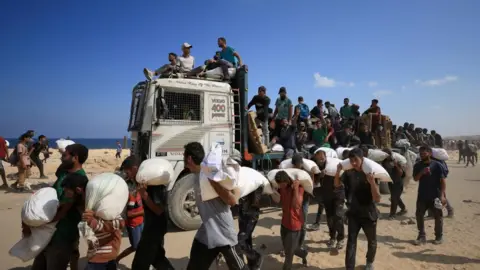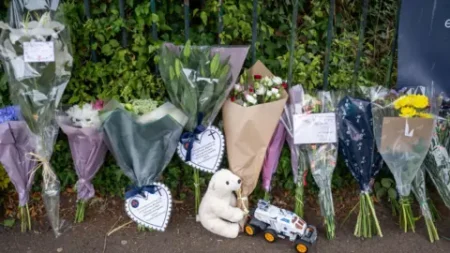The ongoing conflict in the Gaza Strip has escalated dramatically, with the latest reports indicating that Israeli forces have killed at least 67 Palestinians who were awaiting humanitarian aid in northern Gaza. This tragic incident was confirmed by the Hamas-run health ministry, exacerbating the humanitarian crisis in the region. The Israel Defense Forces (IDF) acknowledged that they had fired warning shots, claiming that these were necessary actions to mitigate what they described as “an immediate threat.” However, they have disputed the high casualty figures reported by local authorities.
Beyond the fatalities in northern Gaza, additional deaths were reported elsewhere in the territory; six more individuals lost their lives while waiting for aid. Furthermore, the health ministry has indicated that over 150 people suffered injuries, some of them severely, highlighting the grim circumstances faced by the Palestinian population amid rising violence. A disturbing trend has been observed, wherein almost daily reports emerge of Palestinians being killed while seeking food, particularly since late May. A prior incident on Saturday alone saw at least 32 individuals perish due to Israeli gunfire near aid distribution sites in southern Gaza.
The context of these incidents is crucial. Many shootings have occurred close to facilities operated by the Gaza Humanitarian Foundation (GHF), which, backed by the United States and Israel, employs private security contractors to implement aid distribution from locations within Israeli-military-designated zones. In addition to those incidents, UN operations aimed at delivering humanitarian assistance have also become sites of violence.
Amid this turmoil, the Israeli military has issued evacuation orders for parts of central Gaza, particularly in areas like Deir al-Balah, where no ground offensive has yet been conducted during the lengthy military campaign against Hamas that has persisted for 21 months. The IDF instructed residents, including those previously displaced, to evacuate immediately and move towards al-Mawasi, located along the Mediterranean coast. This evacuation request has instigated panic among the local Palestinian population, which comprises tens of thousands of individuals, as well as the families of Israeli hostages believed to be held in the region.
The IDF has undertaken airstrikes in this area but has refrained from deploying ground troops thus far. Additionally, the military dropped leaflets urging residents in specific districts of southwest Deir al-Balah to vacate their homes, a clear indication of potentially impending military action. The IDF has asserted its commitment to dismantling Hamas’s capabilities and infrastructure, while simultaneously appearing to tread carefully due to suspicions regarding hostages in the vicinity.
Reports suggest that approximately twenty of the remaining fifty hostages believed to be in Gaza are still alive. Over half of Gaza’s population, which exceeds two million, has faced displacement amidst the prolonged conflict, with numerous evacuation demands affecting extensive regions.
In light of these troubling developments, Pope Leo XIV has issued a call for an “immediate end to the barbarity of the war,” denouncing the indiscriminate use of force. Such statements come in the aftermath of a deadly Israeli strike that targeted the only Catholic church in Gaza—a situation which Israeli Prime Minister Benjamin Netanyahu expressed deep regret over.
As the situation deteriorates, the United Nations has warned that civilians in Gaza are facing severe starvation, urging for a swift influx of essential supplies. The backdrop of this conflict traces back to the violent attacks orchestrated by Hamas on October 7, 2023, which resulted in approximately 1,200 casualties and led to the capture of 251 hostages by the group. In response, Israeli military actions since then have led to the death of more than 58,895 individuals in Gaza, a count provided by the Hamas-run health ministry, which many—including the UN—consider to be one of the most reliable sources of casualty statistics in the area.
This relentless cycle of violence has created a profound humanitarian crisis, raising urgent questions about the continued viability of peace efforts and the need for a sustainable resolution to this entrenched conflict.











